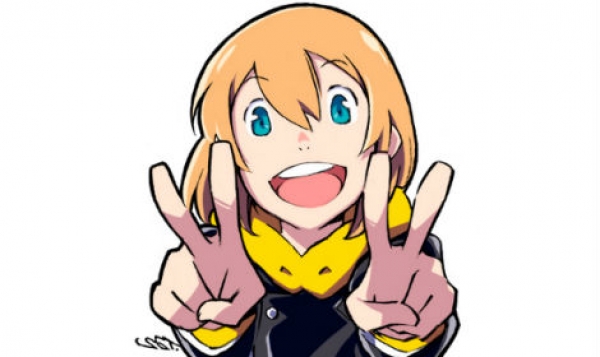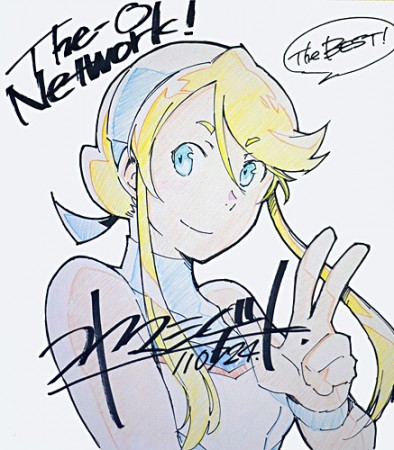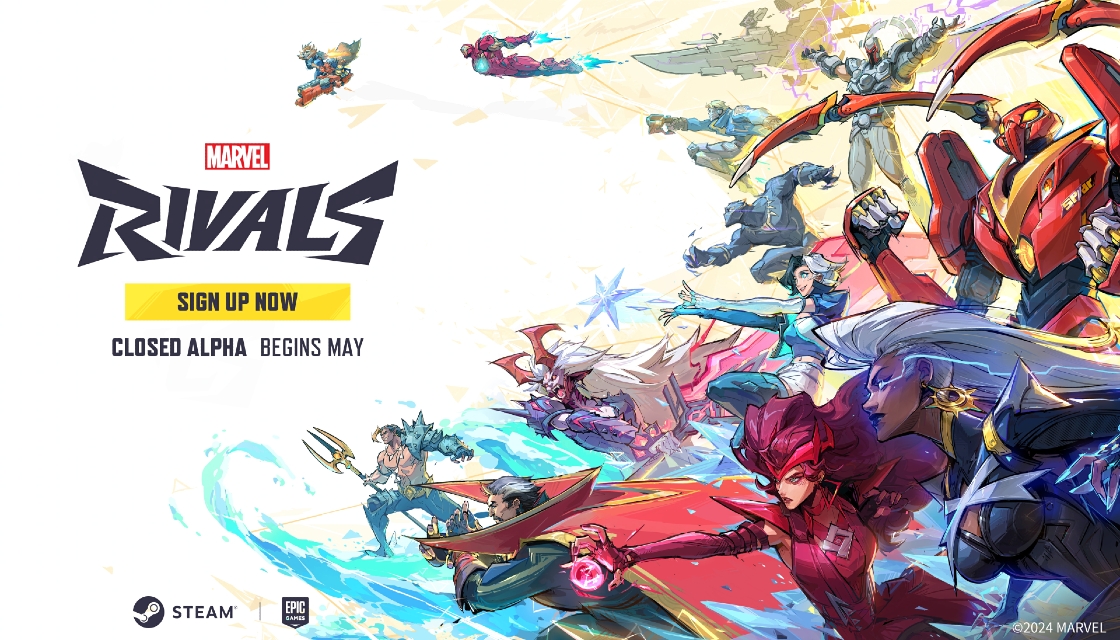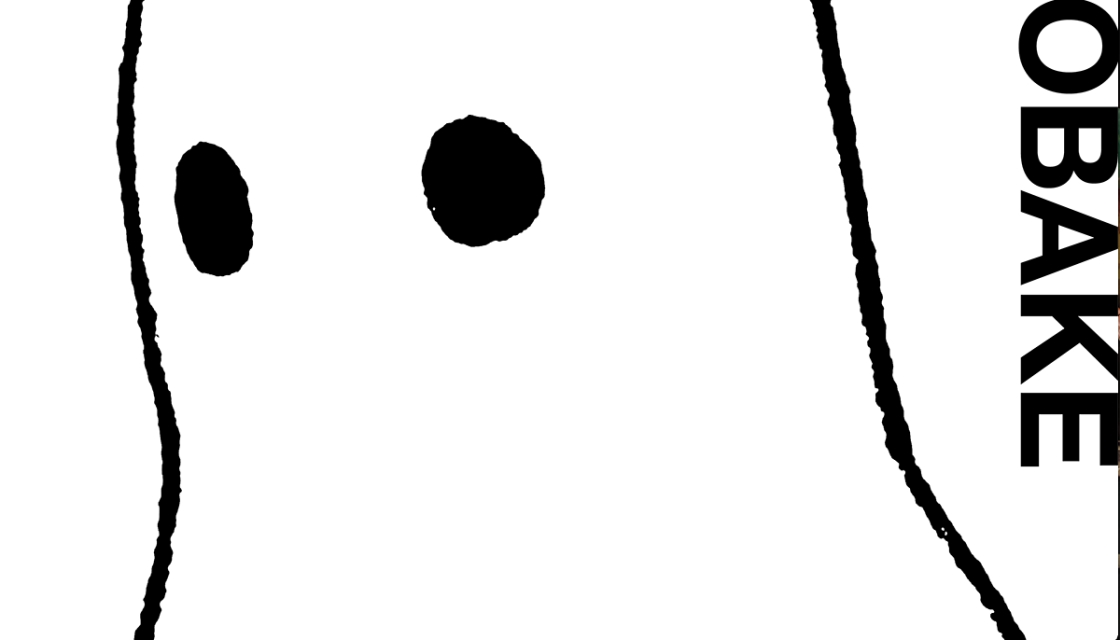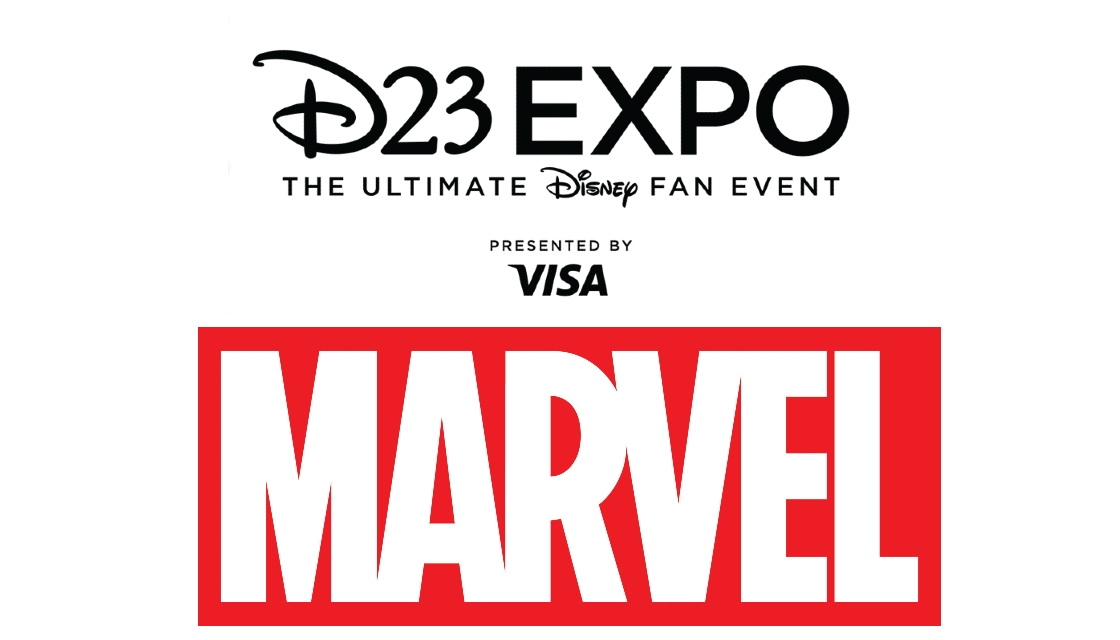Koyama: This is my second time.
T-ONO: How was your stay, has it been fun?
Koyama: In comparison to the previous year, I did more research about the American comic artists and artists in general, so I had more knowledge about them. So, I think I had more fun than the previous year; I was able to meet a lot of the artists and buy more comic books.
T-ONO: Did you see any panels that you enjoyed?
Koyama: It wasn't planned, but I actually attended and took part in the Bandai Entertainment International panel.
T-ONO: Tell us about your favorite Western artists or series.
Koyama: I really like American comics and cartoons, and among those I like artists like Skottie Young, Adam Hughes, Phil Noto, Dustin Nguyen, Sean Galloway, Stuart Immonen, Bruce Timm, Shane Glines, and many more. I love them all! As for my favorite series, I really can't name out a specific title because I love so many (laughs).
T-ONO: How did you first get started in illustration and design?
Koyama: I actually debuted as an illustrator, then I went into drawing manga. After I got into drawing manga, I wanted to learn more like the story, the acting of the characters, and how they're displayed. So I went into the animation industry to learn how where I went under the teaching of Mr. Tsurumaki Kazuya. I was taught a lot about designing from that director and that's how I got started in the industry.
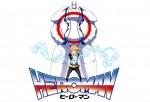 T-ONO: What was your first published work, what was most memorable?
T-ONO: What was your first published work, what was most memorable?
Koyama: My first work would be Diebuster. In terms of which work was the most memorable, I took part in a lot of works. I have some kind of sentimental value with a lot of them, but probably the most memorable would be Heroman since I took a big part in that.
T-ONO: What was it like working with the American production team on Heroman?
Koyama: Surprisingly, I was able to work well together with Mr. Stan Lee and we had a really good time talking together, but at the same time I thought that the differences in culture between Japan and America was different in visual style and living standards. It was hard to work with them, but it was educational as well and I think it was a good experience for me. That experience led to taking part in Panty and Stocking with Garterbelt later.
T-ONO: We interviewed Ryusuke Hamamoto recently and he jokingly mentioned that he was jealous of you because you got to work on an American production!
Koyama: I'm friends with Hamamoto-san and we make a lot of doujins together. Ryusuke Hamamoto also likes American comic. Although he's a Japanese mangaka, he writes American comics. I love his work, which is how I started to get to know him. We're pretty close; we've met in private and we're twitter buddies. Hamamoto has done Petite Eva - Evangelion@School series.
T-ONO: You mentioned there were differences with the American production staff on Heroman. Can you explain what some of those differences were and how you worked with them?
Koyama: For example, there's Lina Davis in the series, one of the female leads, and there's an episode where she goes on a date with Joey. In Japan, it's normal to meet up with your date and ride on a bus together to wherever you need to go to have a good time, but in America the guy usually picks up the girl in his own car, or the father will. This is kind of obvious in both cultures, but in Japan, buses and trains are the means of public transport. Also, it was hard for me to understand some of the American common sense. Those were the kind of cultural differences that were a little hard for me.
T-ONO: Were the American staff really insistent about these things?
Koyama: On the scenario development side, the American staff kept me pretty in check about stuff like - what the American audiences might find funny or with what I explained earlier, so that's about it.
T-ONO: What are some of your personal inspirations? What influences your unique mecha designs?
Koyama: I like to think logically when I design. But if it is only that, the design becomes too standard, in other words a bit boring. So I like to put a little twist into my design. For example, this lighter [pulls out a lighter and holds it up], one would expect that a space shuttle would have wings and other basic gadgets, but wouldn't it be interesting if this lighter was the design for the space shuttle? A lighter would just be floating in the vast darkness of the space [grins]. Our daily life is filled with some very interesting designs and this is where I get most of my inspirations.
T-ONO: Now you've worked on the hit video game, No More Hero's and the weapons have really unique designs. What inspired those?
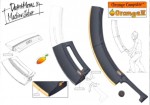 Koyama: All the designs for No More Heroes actually have a source that I have been inspired from (laughs). I'm a little afraid I might get scolded (laughs), but a while ago there used to be a computer called Apple2. That computer is where I got the idea for the sword used by Death Metal. Another example is Travis's beam katana, the original idea came from the old soviet space station, Vostok-1 and Mir (laughs).
Koyama: All the designs for No More Heroes actually have a source that I have been inspired from (laughs). I'm a little afraid I might get scolded (laughs), but a while ago there used to be a computer called Apple2. That computer is where I got the idea for the sword used by Death Metal. Another example is Travis's beam katana, the original idea came from the old soviet space station, Vostok-1 and Mir (laughs).
T-ONO: What was your favorite character illustration or mech design in your career?
Koyama: I love Joey the most. I think that, as a designer myself, I'm a little weak on mechanical designs.
T-ONO: Where would you like to take your art in the next few years?
Koyama: Character and mech design both play an important role in animation. But I' personally like to get better at doing scenario, character background, storyboard, visual, and color settings; they are all part of designing.
T-ONO: Can you discuss anything about your current or future projects?
Koyama: I have a few titles, but I can't really talk about them. For animation, I have five titles. I also have two game titles in production and I personally think the audience will be surprised.
T-ONO: What advice would you give to American fans wishing to draw in the Japanese style?
Koyama: Animators in Japan are very deep, they're kind of like maniacs: they're very extreme. The best advice I can give is to observe. All these animators in Japan observe very well. They observe anything like Japanese comics or American comics. Second of all, they enjoy it. If you can enjoy drawing and have a truck load of fun working with this stuff, working in animation, that person might be suitable and become an animator.
T-ONO: Any message for American fans?
Koyama: It's easy to get access to anime, like watching it on the Internet and stuff, so I'd say please watch more anime. I think the American fans are a little bit more enthusiastic than the Japanese. The only issue is, I would love and appreciate if American fans would watch older titles because there's a lot of new titles every year. So, you know, new titles are cool too, but please look into the older titles.
T-ONO: That's really interesting -- you say American fans are more passionate.
Koyama: You know, Japanese fans are really passionate too, but they burn out fast as well. The trend cycles through really fast here in Japan. As an example, the Core drill necklace that you're wearing (pointing out to the interviewer, me), American audience still love old titles such as Tengen Toppa Gurren Lagann and Cowboy Bebop. In Japan, we're starting to lose those loyal fans; it makes me a little sad since there are so many notable works made in the past.
T-ONO: That about wraps it up, thank you very much!
Koyama: Thank you!

